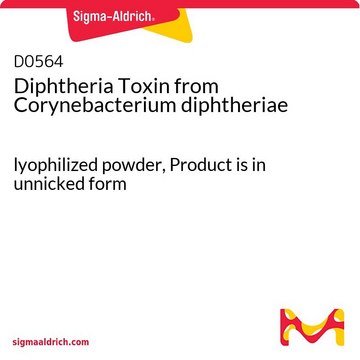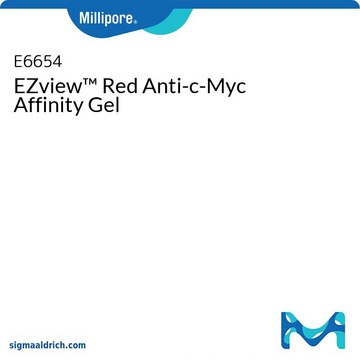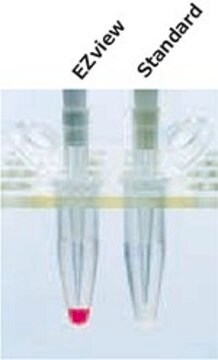E3403
EZview™ Red Protein G Affinity Gel
Sinonimo/i:
EZview Affinity Gel, Protein G Affinity Gel
About This Item
Prodotti consigliati
Forma fisica
liquid
Livello qualitativo
Classi chimiche degli analiti
proteins (Immunoglobulins of various mammalian species)
tecniche
affinity chromatography: suitable
immunoprecipitation (IP): suitable
Capacità
≥8 mg/mL, gel binding capacity (rabbit IgG)
Temperatura di conservazione
−20°C
Descrizione generale
Applicazioni
Caratteristiche e vantaggi
- Increased visibility - Red color reduces risk of incidental aspiration
- Improved recovery of target protein by reduced accidental loss
- Higher reproducibility - More consistent yields
Stato fisico
Note legali
Codice della classe di stoccaggio
10 - Combustible liquids
Classe di pericolosità dell'acqua (WGK)
WGK 3
Punto d’infiammabilità (°F)
Not applicable
Punto d’infiammabilità (°C)
Not applicable
Certificati d'analisi (COA)
Cerca il Certificati d'analisi (COA) digitando il numero di lotto/batch corrispondente. I numeri di lotto o di batch sono stampati sull'etichetta dei prodotti dopo la parola ‘Lotto’ o ‘Batch’.
Possiedi già questo prodotto?
I documenti relativi ai prodotti acquistati recentemente sono disponibili nell’Archivio dei documenti.
I clienti hanno visto anche
Il team dei nostri ricercatori vanta grande esperienza in tutte le aree della ricerca quali Life Science, scienza dei materiali, sintesi chimica, cromatografia, discipline analitiche, ecc..
Contatta l'Assistenza Tecnica.











